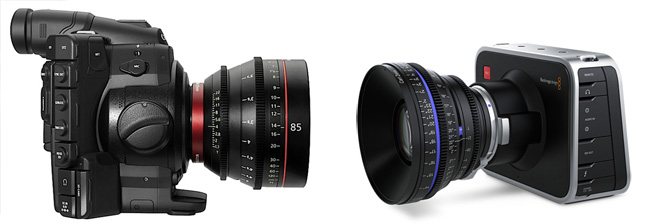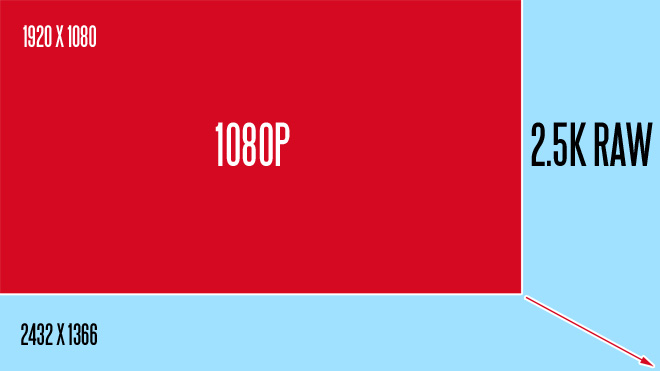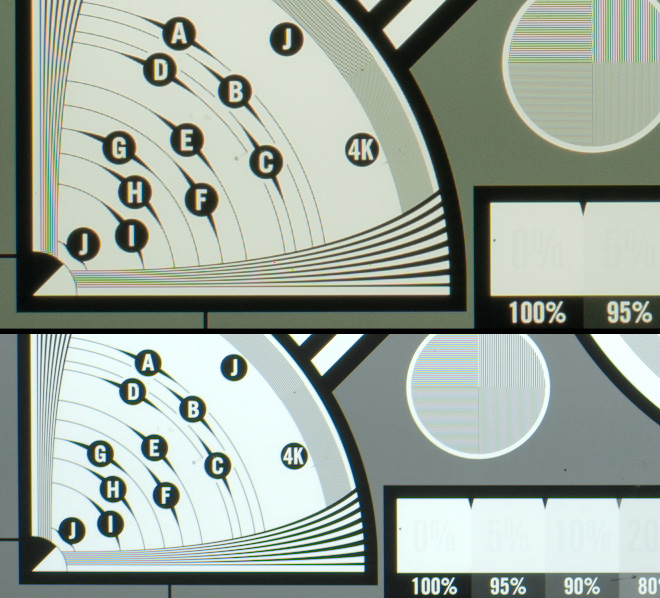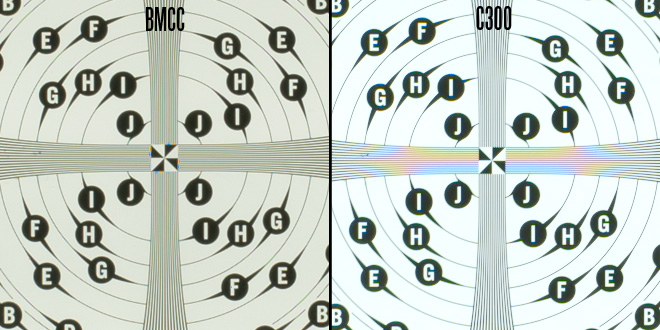The Canon C300 produces a very clean 1080p image from a 4K sensor. How does the Blackmagic Cinema Camera compare in raw mode?
Here’s the size of the Blackmagic’s 2.5K raw image relative to 1080p on the Canon C300.
So first there’s the resolution gain from shooting raw. In terms of area it is similar to the difference between Micro Four Thirds 2x crop and Super 35mm 1.5x crop.
So to the chart…
This is an unscaled 1:1 crop of the test chart shot by John Brawley with both cameras.
The difference in resolution means the Blackmagic shot (top) is zoomed in on the chart compared to the Canon C300 (bottom).
We can see some false colour moire on the finer areas of the chart. Nothing like as bad as a DSLR but it is there and more noticeable than on the C300.
For the rest of the crops I’ve scaled the Blackmagic chart to 1080p in Photoshop. This reduces the moire a little bit and allows us to match the crops better to the C300.
Let’s see another area of the chart.
Considering how the C300 is probably the cleanest 1080p camera on the market, the BMCC puts up a good fight here.
Bare in mind that the false colour you see is from the pre-production model. There’s also some pink highlights in ProRes mode (due to green channel clipping earlier than the red channel) which will be fixed on the final camera. This is why I am waiting to review the retail model that will actually ship to the first customers in 1-2 weeks.
Notice that in the bottom quarter of the image, the BMCC does a slightly better job than the C300.
The lines seem to converge on the C300 at that point but are perfectly vertical on the Blackmagic Cinema Camera.
The moire on the Blackmagic Cinema Camera is not the result of line skipping or scaling the sensor down to 1080p.
It is extremely unlikely you will see moire over brick walls as you do on the 5D Mark II.
Instead this is a different kind of false colour – when a pattern is too fine for the sensor’s native resolution. So on some wide angle shots, areas of very fine grass and other textures may have a few speckles of red, green and blue.
I don’t believe the Blackmagic Cinema Camera has a strong anti-aliasing filter, it may even have none. So it will be interesting to see if a third party anti-aliasing filter comes along for the camera from Mosaic Engineering. And equally interesting to see if we even need one in the real world outside the chart tests.







